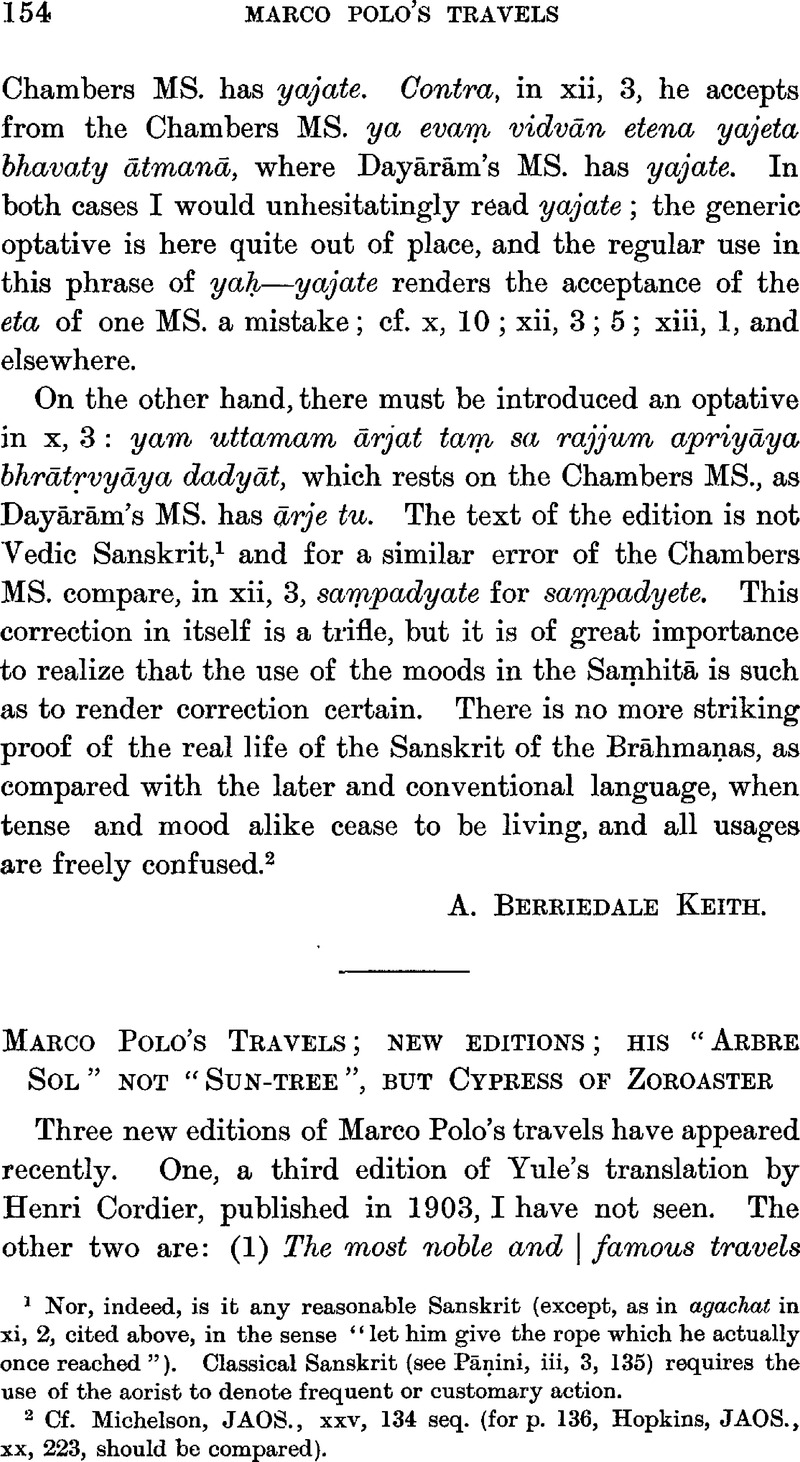No CrossRef data available.
Published online by Cambridge University Press: 15 March 2011

page 156 note 1 GL. is the Latin version, also published by the Paris Geographical Society in 1824. It is MS. No. 3195 in the Bibliothèque Nationale, and derived from the GT.
page 158 note 1 I have not been able to locate this place. Spiegel vocalizes Kishmer, Williams Jackson Kishmar, Persian lexica have Kashmar, Kāshmar, and Kashmīr.
page 158 note 2 I visited Ferūmad in 1876. It is situated about 100 miles east of Shāhrūd and 16 miles north of the high-road to Meshed.
page 158 note 3 Ḳazvīni, Zakaria, ‘Ajāyibu'l makhlūḳat, 1275;Google ScholarMustaufī, Ḥamdullah, Nuzhatu'l Ḳulūb, 1340.Google Scholar
page 160 note 1 Cf. Jackson, Williams, Persia, Past and Present, pp. 404, 438.Google Scholar The association of Abraham with Zoroaster is a familiar fact.
page 161 note 1 This and other extracts are from Eine neue mittelalterliche Weltkarte, by Kretschmer, K., ZGE., Berlin, 1891.Google Scholar
page 161 note 2 About half-way between Teheran and Meshed.
page 161 note 3 The staff must have been given to a descendant of Imam J'afar, perhaps grandson, for Imām J'afar died A.D. 765, long before Shaikh Bāyazīd was born. Bāyazīd (Abū Yazīd) Taifūr al Bisṭāmī died 874–5.
page 161 note 4 Dahistān was a flourishing districṭ east of the Caspian, and on the northern frontier of Khurasān; it is now a waterless desert. It was the land of the Dahæ.